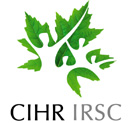


Attention: Assignment editors, health, research and science reporters
| For immediate release- |
2007-46 |
OTTAWA (November 9, 2007) - If you're over 50 and just broke a bone, chances are you've had a visit from the silent thief - osteoporosis. Osteoporosis is a disease that robs bones of calcium, leaving them porous, brittle and weak. In Canada, one-in-four women and one-in-eight men over the age of 50 have osteoporosis.
Strong healthy bones make a big difference for even the simplest of activities such as going for a walk, riding a bike or raking the leaves. Unfortunately, people with osteoporosis often suffer broken hips, spines and wrists. With bad breaks, patients become bedridden and lose their independence. Hip fractures are particularly dangerous because they can lead to permanent disability or death.
Several researchers funded by the Canadian Institutes of Health Research (CIHR) are available to talk about osteoporosis and bone health, as Canadians learn more about this serious disease during Osteoporosis month this November, 2007.
How to mend a broken bone - try glue!
Dr. Gamal Baroud, CIHR-funded researcher, and the research team from the University of Sherbrooke (Sherbrooke, Quebec), available to speak in French and English.
Breastfeeding may provide clues in the fight to beat osteoporosis
Dr. Christopher Kovacs, CIHR-funded researcher from Memorial University (St. John's, Newfoundland)
Bones at risk in people taking anti-depressants
Dr. David Goltzman (McGill University) and the research team at the Canadian Multicentre Osteoporosis Study (CaMos), a CIHR funded project across Canada.
Good bone health starts at childhood: The importance of physical activity and bone health in children and adolescents
Dr. Heather McKay, CIHR-funded researcher from the University of British Columbia (Vancouver, BC) and Director of the Centre for Hip Health and MSK Research (affiliated with the Vancouver Coastal Health Research Institute)
Diabetes affects bones too!
Dr. Sophie Jamal, a CIHR-funded researcher from the Toronto CaMos Centre (Toronto, Ontario)
Decisions, decisions: What makes some cells decide to become bone cells?
Dr. Jane Aubin, Scientific Director of the CIHR Institute of Musculoskeletal Health and Arthritis from the University of Toronto (Toronto, Ontario)
Building better bones: How does activity help?
Dr. Jeff Dixon and Dr. Stephen Sims, CIHR-funded researchers from the University of Western Ontario (London, Ontario)
-30-
The Canadian Institutes of Health Research (CIHR) is the Government of Canada's agency for health research. CIHR's mission is to create new scientific knowledge and to catalyze its translation into improved health, more effective health services and products, and a strengthened Canadian health-care system. Composed of 13 Institutes, CIHR provides leadership and support to more than 11,000 health researchers and trainees across Canada. http://www.cihr-irsc.gc.ca/
For an interview, please contact:
David Coulombe
CIHR Media Specialist
Office: 613-941-4563
Mobile: 613-808-7526
Email: mediarelations@cihr-irsc.gc.ca